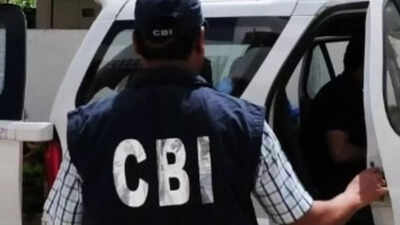India Ratings and Research (IND-R) has increased the long-term Issuer rating of Yes Bank Ltd (YBL) from ‘IND A’ to ‘IND AA-‘. The outlook is stable. This improvement in rating refers to profit, asset quality and improvement in deposit profiles.
Rating improving the Q1 FY26 takes into account the improvement in consolidated benefits, which has been reduced by 9 percent (FY22: 11.5 percent) in RIDF exposure and a target of 5 percent by FY27, which has improved the net interest margin (NIM). Due to the increasing attention to retail and sme in loan mix, it has become about 60 percent (FY20: 36 percent) in FY25, indicating to move away from corporate lending, resulting in continuous improvement in returns on assets. In addition, rating improves ratings also reflect the ongoing improvement in the bank’s better asset quality, Legacy stressed assets (Net Non-Performing Assets + Net Security Receits + Net Restricted Assets).
In addition, the bank maintains a capital addicidy ratio of 16.2 percent and a sufficient capital with Tier-I Capital at 14 percent, which is supported by the internal exhul, which is sufficient for an increase of 11% -113% in advanced in the near moderate period. The IND-R, YBL also consider the proposed acquisition of 20 percent stake by the Sumitomo Mitsui Banking Corporation, which is expected to improve the bank’s strategic direction and governance structure. Investment in YBL’s low-hearted RIDF deposit has also been taken into consideration due to PSL shortfall in rating and increase in cost-to-insial ratio over several years.
Rating action
| Instrument |
Current rating and outlook |
Action |
| Infrastructure bond |
IND A / Positive |
IND AA-/upgraded to stable |
| Basal III Tier 2 Bond |
IND A / Positive |
IND AA-/upgraded to stable |
- Improvement in asset quality metrics amid better credit environment
- Continuous improvement in deposit profiles between competition
- Continuous trend towards Granular Asset Profile Mix
- Adequate capitulation
- Improvement in profitability between peers, although minor
The YBL asset quality has been continuously improved since FY20, with Gross NPA 1QFY26 to decrease to 1.6 percent (FY20: 16.8 percent). It is mainly due to selling a large part of its non-performing asset (NPA) portfolio in FY23 for JC Flowers Asset Reconstruction Private Limited (Date Rating ‘IND A+’/Stable) for a total return of Rs 80 billion. At the end of 1QFY26, the joint value of net NPA, net restored book and SRS was low at 0.5 percent of the total net advance, indicating a cleaner balance sheet. In addition, YBL’s Standard Restricted Assets fell up to Rs 3.8 billion in the last four quarters, which was Rs 34.4 billion in 1QFY25. SMA-1 and SMA-2 were at moderate levels in the segment, in FY25 a combined ratio of 1.4 percent corresponds to peer. In FY25, the bank acquired an upgrade and recovery of Rs 23.4 billion and a similar trend is expected in FY26. This reform reflects the bank’s focused efforts on solving the stressed account and exiting weak exposure. However, in 1qfy26, the slipage remained stable at 2.8 percent (fy25: 2.1 percent; fy24: 2.5 percent). The retail segment had more slipperes and at 4.2 percent. Although the bank has carefully provided on non-performing assets, the provision coverage ratio in 1QFY26 was 80 percent (FY25: 79.7 percent; FY24: 85.6 percent). The profitability reported in 1qfy26 (FY25: 50bp; FY24: 90bp) has been established and a pre-provisioning operating profit (PPOP)/Net Advanced of 2.3 percent (1.7 percent; 1.5 percent) is enough to absorb credit costs. IND-R believes that slipage trends in retail and MSME segment will remain a major monitoring as they are constantly developing. IND-R believes that YBL will maintain stable asset quality in FY26, which is looking at its strong capital level, healthy operating buffer and ongoing recovery.
YBL के डिपॉजिट में लगातार वृद्धि जारी रही, जो 1QFY26 में 2.8 ट्रिलियन रुपये तक पहुंच गया (2.8 ट्रिलियन रुपये; FY24: 2.6 ट्रिलियन रुपये; FY23: 2.2 ट्रिलियन रुपये), जिससे FY25 में डिपॉजिट में इसकी बाजार हिस्सेदारी बढ़कर 1.3 प्रतिशत हो गई (FY24: 1.3 प्रतिशत; FY23: 1.1 प्रतिशत; FY22: 1.1 प्रतिशत; FY21: 1.0 percent). In addition, the bank’s current account and savings account (CASA) base remained largely stable (1qfy26: 32.8 percent; fy25: 34.3 percent; fy24: 30.9 percent; fy23: 30.8 percent). However, the bank’s retail deposits increased to 61 percent in 1QFY26 (FY22: 36 percent), without its branch strength material growth (Branch Count: 1,253; FY22: 1,122), which shows significant retail tractions. The cost of the deposit in 1qfy26 was 5.8 percent (fy25: 6.1 percent; fy24: 6.1 percent; fy23: 5.2 percent) which corresponds to peers. In addition, the bank has shown the declining concentration of the deposit between the growing granular traction and its top 20 deposits (FY25: 11.3 percent; FY21: 17.5 percent). YBL’s deposit profile has improved over the years. Many strategic initiatives, including adding new customers, increasing transactional flow through cash management and digital payment capabilities, opening more outstation locations and emphasizing more emphasis on the metrics related to liability in employee performance evaluation, especially for customer-supporting roles.
With a sufficient reduction in the Legacy portfolio, the bank has seen a steady growth in its more granular retail portfolio, with a continuous increase in the total loan book to 48.4 percent in 1QFY26 (fy25: 48.4 percent; fy24: 47.1 percent; fy23: 43.4 percent). In addition, the bank continues to focus on the microfinance portfolio, especially used for the finance of small businesses and affordable housing segment. It is being said that the change in the overall portfolio remains high. While the bank has taken active steps in the portfolio and has made policy changes, including the introduction of more dynamic scorecard for retail lending. The agency hopes that the share of retail portfolio in the overall mix will gradually increase, which will gradually increase the portfolio to increase the RIDF deposit to increase retail distribution. Additionally, IND-R believes that going from Chunkier Corporate Exposure to Granular Portfolio before FY20 will provide enough operating buffer to absorb credit costs.
The Capitalization of the YBL seems sufficient, by the end of 1QFY26, the Capital to Risk (Weight) Assets Ratio (CRAR) is 16.2 percent and the Tier-I capital is 14 percent. The bank is not expected to raise a capital in FY26, but has a board approval to raise equity of Rs 15 billion if there is a visibility for mid-to-high tin loan growth. The Sumitomo Mitsui Banking Corporation has a pre-MP right to capital information in any capital raising program to maintain its stake in YBL, ensuring long-term capital support. By FY25, the bank carried defined tax assets of Rs 75 billion, which was reduced by net worth to reach CET-1. The use of these assets will issue marginal capital. Additionally, improvement in profitability and internal exhul supports a credit growth of 11% -12% in a close to medium period. However, adverse results of the Honorable Supreme Court’s decision on AT1 bonds can reduce the CET1 ratio by 2.5% – 3%, while Tier 1 will remain unchanged. However, until the matter is resolved, Ind-R hopes that the bank will continue to collect capital and deploy it towards loan growth.
YBL has reported lower NIMs than Peirs, mainly due to its adequate investment in low-filled RIDF deposits between PSL shortfall over the last few years. However, in 1qfy26, the PSL shortfall of the total assets decreased to 9 percent (FY22: 11.5 percent). This led to a slight improvement in NIM in 1qfy26 and increased to 2.5 percent. If YBL did not invest in RIDF bonds, there would have been improvement and more, causing NIM to drag about 50bp. This may continue in the moderate period, as the RIDF deposit is likely to be matured in the next six years. The YBL is focusing on increasing the traction towards the retail segment (both asset and liability), due to which the cost-to-incomil ratio in 1QFY26 was 67 percent (fy25: 71.3 percent; fy24: fy24: 74.4 percent; fy23: 72.6 percent). The credit cost in 1qfy26 was low at 0.5 percent in 1QFY26 amid a Benin credit environment (FY25: 0.5 percent; FY24: 0.9 percent), which corresponds to peers. Adequate right-back of provision on non-performing investment inspired by healthy recovery of SRS has supported profitability. Overall, YBL’s return on assets increased to 0.8 percent in 1QFY26 (fy25: 0.6 percent; fy24: 0.3 percent; fy23: 0.2 percent); However, the agency expects the ROA to reach 1.0 percent by FY27.
The bank had a short-term gap (excess of liability on assets over a period of up to one year) FY25 had 3.4 percent in the asset-bail maturity statement (ALM). But, above regulatory requirement, the statutory liquidity ratio (SLR) holding can be used to complete the shortfall in the Alm. In addition, YBL has access to liquidity support from the Reserve Bank of India (RBI) under the Liquidity Adjustment Facility in addition to the Marginal Standing Facility in case of immediate requirement. The share of YBL’s retail and branch banking deposits increased to 61 percent in 1QFY26 (FY25: 59 percent; FY24: 53 percent). With the increase in share in retail advances, there is a more favorable ALM. As advance and deposits are low, liquidity profiles will improve. Its liquidity coverage ratio for 1qfy26 was 135.8 percent, while the requirement was 100 percent. Assuming a common business scenario, IND-R does not expect the bank to face challenges related to raising funds from the Interbank market.
Chief Financial Indicator (in Arab Rupees)
| Details |
FY25 |
FY24 |
| Total assets |
4,234.4 |
4,054.9 |
| Total equity |
477.8 |
421.5 |
| Net income |
24.1 |
12.51 |
| Return on Assets (%) |
0.6 |
0.3 |
| CET-1 (%) |
13.5 |
12.2 |
The above rating was sought by Issuer, and therefore, India ratings have been compensated for the provision of rating.


















